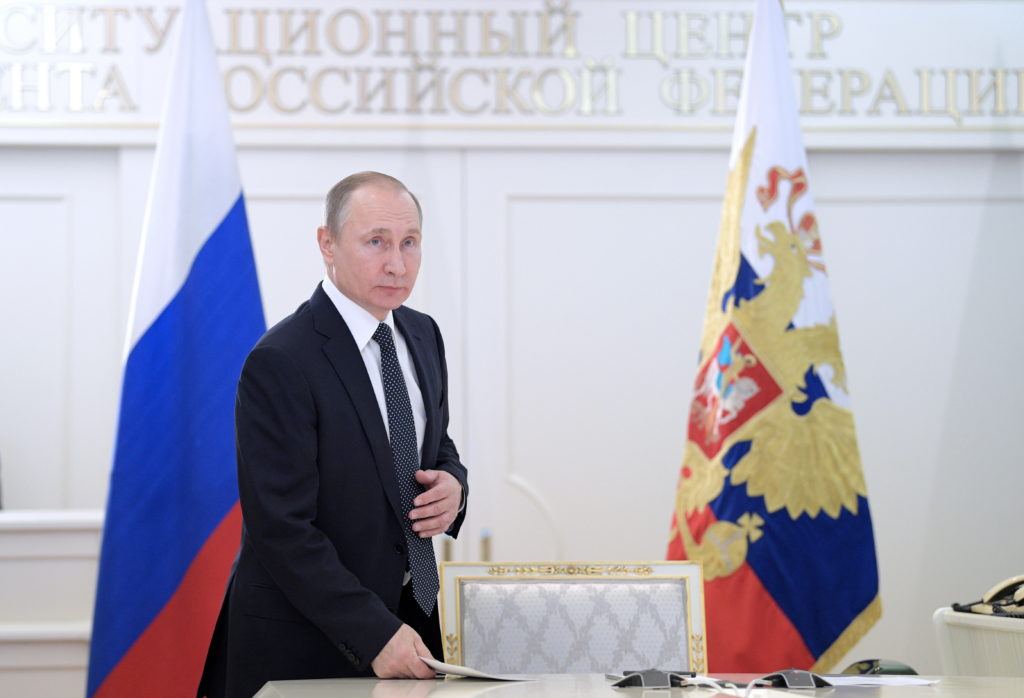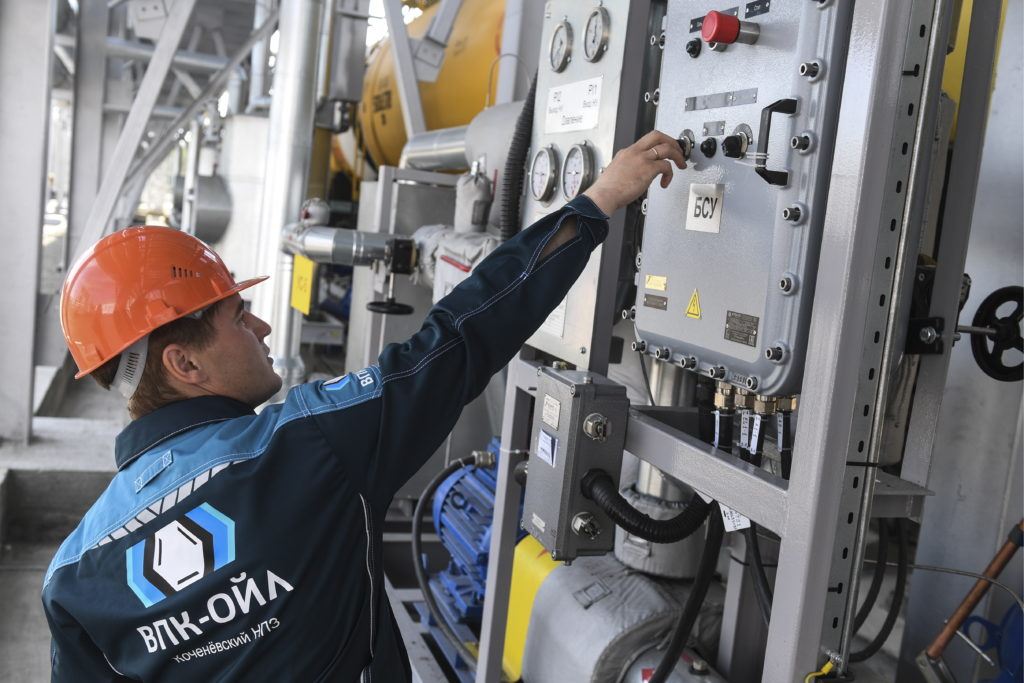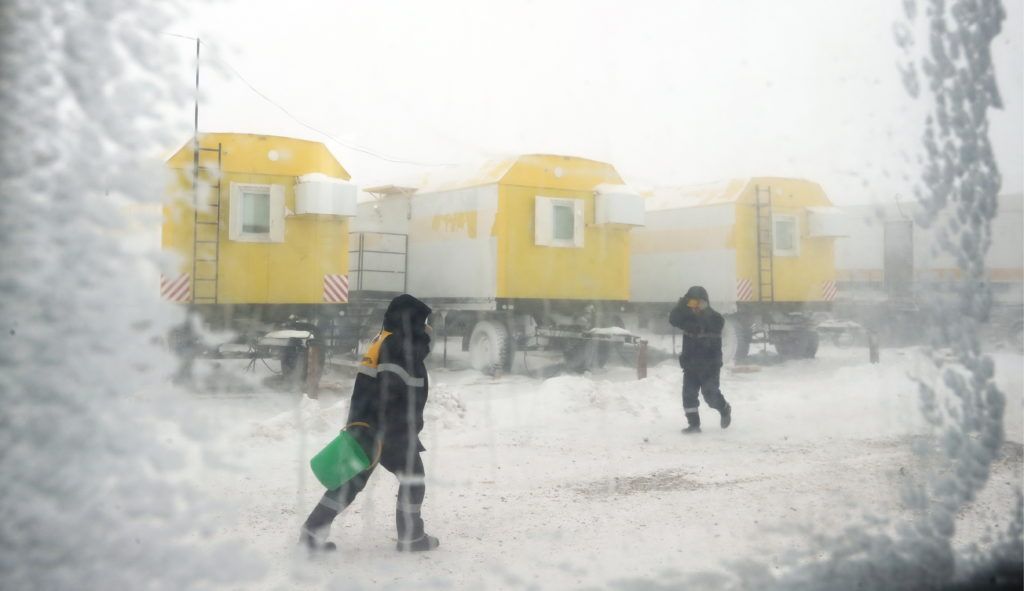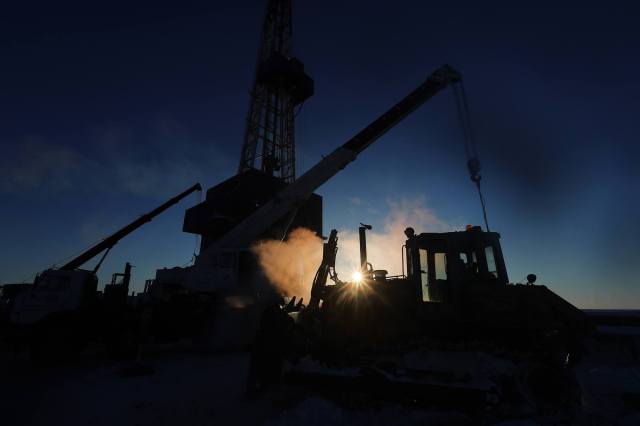The Rosneft oil rig drilling the first exploration well in the Khatanga Bay. Credit: Vladimir Smirnov/Tass/PA Images

Much has been written about Saudi Arabia and the United States now vying for the position of the world’s biggest oil producer. That’s not surprising – the growth of the North American shale industry over the last decade has been spectacular.
The exploitation of ‘tight oil’ fields in Texas, North Dakota and the Appalachians has transformed the US oil complex – pushing total output to 12.4 million barrels a day in 2016, up from just 6.8 million barrels daily in 2006.
Since 2012, in fact, using horizontal drilling, multi-stage fracturing, seismic imaging and other ‘non-conventional’ techniques on shale formations, America has routinely out-produced Saudi.
It’s important to remember, though, that the Desert Kingdom can ‘turn the spigot’ any time it likes, ramping up its conventional oil production by drawing from comparatively accessible wells. Lately, of course, Saudi has been trying to keep a lid on production, with Riyadh working at the heart of the OPEC exporters’ cartel to limit global oil supplies, in a bid to push prices up.
One should also remember that while the Saudi-US oil rivalry is eye-catching, both countries are competing for the title of top oil producer with Russia. Despite its reputation for inefficiency, and ageing equipment, the long-established Russian oil industry has consistently produced around 11 million barrels daily over the last ten years, a record matched only by Saudi. Russia also has the world’s largest gas natural reserves – making it, in many ways, the world’s true energy superpower.

America’s claim to oil supremacy is further dented by the reality that, as the biggest crude consumer on earth, soaking up 20 million barrels a day, it remains dependent on a massive 8 million barrels daily of net oil imports. Russia and Saudi, meanwhile, are by far the world’s two biggest crude exporters.
The ‘shale revolution’, then, is a heady story of ingenuity, grit and brave investment – all the things that have, for well over a century now, made the US the global economic powerhouse. But the punchy shale industry is nowhere near ending America’s ongoing ‘foreign energy dependence’. The US economy relies heavily on crude pumped overseas, often in countries that aren’t friendly. That won’t change anytime soon.
Oil clearly imposes many costs – geopolitical, economic and environmental – on large Western crude importers such as the US. But change could be coming. For there is a growing body of opinion that rapid advances in battery technology, and especially the widespread use of electric vehicles, could soon upend the global oil industry – providing a major economic and geopolitical premium for the West.
Transport accounts for around 70% of all crude use, with cars and trucks currently using around half of all oil produced. That’s why some believe that, as electric vehicles become more common, oil will display significant ‘demand destruction’, causing crude prices to plummet and stay low. It’s certainly the case, as Peter Franklin says, that “governments and car manufacturers are queuing up to announce their plans for a comprehensive switch to electric vehicles over the next two or three decades”.
As such, analysts are already thinking through not just the economic and commercial impact, but also the geopolitical implications of permanently lower oil prices. What would happen to Russia, for instance, if $10 crude became the norm?
Bearing up
Russia’s combined oil and gas sectors account for around 16% of GDP. While the country’s hydrocarbon dependence has fallen sharply since 2000, when oil and gas made up 40% of the economy, it still remains too high. Oil and gas taxation, moreover, generated 38% of state revenues during the first three months of 2017, according to Russian Ministry of Finance, and around 60% of all export receipts. Energy continues to loom large in the Russian economy.
The Russian oil industry, though, has two features that make it rather resilient when oil prices fall – as they did, from an average of $109 in 2014 to $52 in 2016. The first is that the preponderance of sub-surface and relatively shallow wells means that ‘lifting costs’ across Russia – the price of producing each barrel of oil – are rather low.
Harsh North Sea conditions make the UK a relatively high-cost producer – at $52 a barrel during 2016. In Brazil, the figure was $48. Lifting costs in Canada averaged $41 last year – tar sands production is itself energy-intensive – while in Nigeria it was $31.
In Russia, though, lifting costs averaged just $17 last year. As such, even at relatively low crude prices, the industry remains profitable – which keeps the oil flowing and the tax and export revenues rolling in.

The other mechanism that helps Russia withstand lower oil prices is the floating ruble. When crude prices drop, so does the Russian currency – given widespread international perceptions the economy consists of little else but hydrocarbons. This lock-step relationship between the dollar-ruble exchange rate and the oil price, in turn, helps the Russian oil industry when crude falls – because almost all its costs are denominated in rubles, while its revenues, from the oil sold abroad, are in dollars.
A lower dollar-terms oil price, then, brings down domestic ruble production costs, while the dollars from Russia’s oil exports become stronger in ruble terms – helping to maintain margins even though the crude price has fallen.
While still too dependent on commodities, the Russian economy has actually diversified significantly in recent years. The country’s service sector now commands around 60% of GDP, more than three times the share of oil and gas. This reality, combined with low lifting costs and the ruble free-float, help explain why the Russian economy is less oil dependent than is commonly understood.
Some 50% of Kuwaiti GDP derives from oil and gas, and 45% in Saudi. Venezuela is also heavily energy dependent, with hydrocarbons generating 25% of GDP. Russia’s 16% figure is also lower than that of Norway – where hydrocarbons account for 22% of the economy. Like Norway, though, Russia has used its oil wealth relatively wisely in the past, helping it withstand lower crude prices today.
Back in 1998, in the midst of a global systemic crisis sparked initially by a financial collapse in Thailand, Russia’s post-Soviet economy was extremely fragile, and Moscow famously defaulted on several tranches of Soviet-era debt. It resulted in Russia becoming the largest debtor of the International Monetary Fund.
But after that, as oil prices rose steady from less than $30 in 2001, to over $140 in 2008, Russia channeled much of its oil revenues into debt repayment and the accumulation of financial reserves – a process that enjoyed public support, given the trauma of the collapse. Moscow now boasts a gross national debt of just 15% of GDP – the lowest of any major economy – and one of the world’s largest hauls of foreign exchange reserves. In net terms, in fact, IMF figures show that Russia is a creditor to the rest of the world. Moscow has also built up a budget stabilisation fund, financed by oil revenues when prices are high, to help limit annual budget deficits when crude price is low.
In 2014, the combination of lower oil prices and Western sanctions imposed as a punishment for taking control of Ukraine’s Crimea region sent Russia into recession. Having contracted 2.8% in 2015 and 0.2% last year, the economy is now on course to expand by 2% in 2017. A recovery in consumer demand and investment, is combining with a more stable currency and, significantly, lower inflation. While Russian CPI inflation averaged 12.9% in 2015 and 5.4% the year after, the October 2017 figure was just 2.7% – by far the lowest in the country’s post-Soviet history.
Variety, comrade!
While Russia has quickly recovered from the recent dip in oil prices, it is clear the economy must further diversify. As it exhausts its low-cost sources of ‘brown’ oil in Western Siberia, Russia will increasingly rely on more remote ‘green’ oil from new fields in Eastern Siberia and, ultimately high-cost ‘blue’ oil from the Arctic Ocean. As ‘lifting costs’ rise, Russia’s ability to cope with oil price swings will diminish.

An oil price of around $40 gives Russia the best incentive to diversify. That price allows the industry to maintain solid production, while investing in extraction and refining projects. Under the existing tax system, though, revenues from the oil industry would be rather small, forcing the government to encourage more rapid diversification. Moscow seems to back such a strategy – having based its entire 2017 government budget on the basis of $40 oil.
Unless such diversification happens, oil at $10 would cause Russia some serious problems. While the government has large financial reserves, these would not last long, given that almost two-fifths of state revenues currently derive from hydrocarbons.
Western analysts examining the potential impact of cheaper oil seem caught between wanting the Russian economy to splutter, while worrying also about the potential knock-on effects of the country seeing its budget revenues slip.
“How will Russia react once the ‘cheap oil’ recession really kicks in?” asked the 2016 edition of the NATO Review. “Will it acknowledge the challenge and face it head-on, by seeking to modernize and diversify its economy, or will it seek to distract its public … one cannot discount the risk that the leadership will seek to divert attention by engaging in foreign policy adventurism”.
My view is that we won’t see $10 any time soon. The Economist magazine famously said it was coming, in cover stories both in 1999 and 2003. In both cases, the price of crude surged.
The advent of electric cars is clearly very important, and that could drastically cut oil use – especially if the electricity is generated using nuclear or gas-powered turbines, or renewables. But the vested interests connected with the internal combustion engine are enormous and they’re not just going to withdraw quietly. Nor, likewise, is the global oil industry itself – perhaps the biggest vested interest of them all.
Which may be just as well. Because, while a gradually falling oil price would be beneficial, a rapid and permanent collapse would cause social and political havoc – not only in Russia, but to a far greater extent in Nigeria, Venezuela and across much of the Middle East.










Join the discussion
Join like minded readers that support our journalism by becoming a paid subscriber
To join the discussion in the comments, become a paid subscriber.
Join like minded readers that support our journalism, read unlimited articles and enjoy other subscriber-only benefits.
Subscribe